|
|
|
Sort Order |
|
|
|
Items / Page
|
|
|
|
|
|
|
| Srl | Item |
| 1 |
ID:
130602
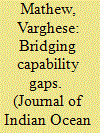

|
|
|
|
|
| Publication |
2014.
|
| Summary/Abstract |
Whoever controls the Indian Ocean, dominates Asia. This Ocean is the key to seven seas. In the 215'' century, the fate of the world would be decided on its waters".
Admiral Alfred Thayer Mahan
Indian Ocean is the third largest of the world's oceanic divisions. ; The world's earliest civilisations in Mesopotamia, ancient Egypt, the ' Indian subcontinent, Persia and later in Southeast Asia, all developed around the Indian Ocean. Today its littorals and hinterland comprises more than fifty nation states and two-thirds of the world's known reserves of strategic raw materials while an estimated 40 °/o of the world's offshore oil production comes from it.2 The Oceans have been historically the arenas for contest between maritime powers.
|
|
|
|
|
|
|
|
|
|
|
|
|
|
|
|
| 2 |
ID:
130601
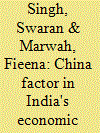

|
|
|
|
|
| Publication |
2014.
|
| Summary/Abstract |
The technology driven time-and-space shrink in recent decade have turned open oceans from barriers to bridges. This has opener new frontiers for trade and transportation, for resource exploitation as also for adventurous scientific explorations into the history 0 human evolution as also into our future. This recent paradigm shift is distinct from the discovery of steam ship leading to naval fleets ancient colonialism in the 19"'century which was focused not only on European powers' control and exploits but also on continental humarjand material resources of their colonies across the world. The recent maritime discourses have instead opened up enormous new avenue entities even to achieve their basic national development and security objectives.
|
|
|
|
|
|
|
|
|
|
|
|
|
|
|
|
| 3 |
ID:
130598
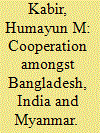

|
|
|
|
|
| Publication |
2014.
|
| Summary/Abstract |
Back in 1991 India articulated a Look East policy with the obvious objective of capitalising on the emerging potential in South East and East Asian regions. With her unique geographical position it was expected that the North Eastern part of India would serve as the land bridge between India and the emerging economies of these regions. In 2002, Bangladesh herself recognised the growing potential of the ASEAN members and other nations in the East Asian region and articulated her own Look East policy with a focus on exploring the
emerging economic opportunities. The immediate priority was to establish connectivity with the extended region through Myanmar.' However, despite occasional policy pronouncements from both sides, the Look East policy of Bangladesh could not really make much headway.
|
|
|
|
|
|
|
|
|
|
|
|
|
|
|
|
| 4 |
ID:
130599
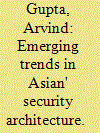

|
|
|
|
|
| Publication |
2014.
|
| Summary/Abstract |
The centre of gravity of international relations is shifting to Asia Pacific. The Asian region has been characterized by intense cold war rivalries; numerous territorial and maritime disputes, undemocratic A and oppressive regimes. The United States has been involved as an 'anchor of security in the region. Asian countries have seen acute financial crisis in the past. Many countries have been victims of terrorism, insurgencies, militancy, and fundamentalism. Resource Iigompetition is intensifying. Proliferation of weapons of mass destruction (WMD), presents a threat to the region. The past has "also been tainted with massive violence and bloodshed. The Korean _?._are claimed two million lives and the Vietnam War took three million fives. Internal pogroms by Khmer rouge claimed two million lives. .me of these issues like the divided Korean peninsula and the cross- t tensions between China and Taiwan still persist. The region
[nines to face formidable security challenges.
|
|
|
|
|
|
|
|
|
|
|
|
|
|
|
|
| 5 |
ID:
130604
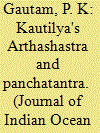

|
|
|
|
|
| Publication |
2014.
|
| Summary/Abstract |
Kautilya"s Arthasastra composed and compiled, in Sanskrit, between the 4"' Century BCE to the 3"' Century CE, is an exhaustive treatise on statecraft and issues of diplomacy, war, peace. intelligence, security, law, and political economy. Discovered in full text form in the early 1900s and then translated into English and
other languages, it is one gem of political theory which stands out prominently in the corpus of the rich but under-explored indigenous ancient history of India. Johann Jakob Meyer, the German lndologist and translator of the work from Sanskrit to German in 1927, remarked that Kautizya's Arthasastra is not a book but a library of ancient India.
|
|
|
|
|
|
|
|
|
|
|
|
|
|
|
|
| 6 |
ID:
130600
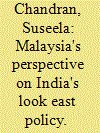

|
|
|
|
|
| Publication |
2014.
|
| Summary/Abstract |
The year 2012 completed 20 years of India's Look East Policy (LEP). Launched by former Indian Prime Minister P.V. NarashimeRao in 1992, this policy had its genesis in the end of the cold war following the collapse of the Soviet Union. To India, this policy was more than just a foreign policy alternative as it provided a development alternative as well, in synchronization with the globalization paradigm and the resurgence of Asia as an economic powerhouse. The 1990: saw a period rapid economic development and growth of Asian countries - especially Southeast Asia. With the abrupt collapse c the Soviet Union in 1991, India was left 'deprived' (the Soviet Union was lndia's strongest partner), and started to seek new markets t~
fuel its own economic growth. Thus Indian Prime Minister at the time P.V. Narasimha Rao, came up with the concept of a "Look East Policy for India. This was a policy of economic engagement with Southeast Asia and East Asia, to achieve two objectives. First was to encourage trade links with individual partners, and second, to provide foreign employment for India's own expanding work force (R.P. Khanna, 1991,6-7).
|
|
|
|
|
|
|
|
|
|
|
|
|
|
|
|
| 7 |
ID:
130603
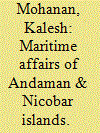

|
|
|
|
|
| Publication |
2014.
|
| Summary/Abstract |
India has a vast coast line and has a rich maritime history which dates back to pre-Harappa period. By virtue of lndia's geographical location on the global map and specifically its strategic location in the Indian Ocean, makes India a subcontinent in itself. The Andaman & Nicobar Islands are a group of islands located east of India in the Bay of Bengal, and possess a wide area of thick dense forest and white beaches. Although little is known about the islands during the ancient period, but there is evidence to suggest that these islands have been inhabited for more than three thousand years.
|
|
|
|
|
|
|
|
|
|
|
|
|
|
|
|
| 8 |
ID:
130597
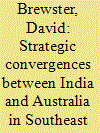

|
|
|
|
|
| Publication |
2014.
|
| Summary/Abstract |
This article will look at strategic convergences between India and Australia in Southeast Asia. It will ?rst examine the development of India's strategic role in Southeast Asia and the trajectory of relations between Australia and India over the last decade or so. it will then consider the convergence of India and Australia's strategic interests in Southeast Asia and review opportunities for strategic cooperation in the region, including in the political diplomatic area and cooperation in maritime security. Finally it will consider the idea of the "lndo-Pacific" as a single strategic region and the potential significance of this for the roles of Australia and India in Southeast Asia.
|
|
|
|
|
|
|
|
|
|
|
|
|
|
|
|
| 9 |
ID:
130605
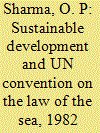

|
|
|
|
|
| Publication |
2014.
|
| Summary/Abstract |
"The sustainability revolution is a compelling reminder of the power each of us has to make this world a better place through our everyday actions. Indeed, if we are to survive we must recognize our place in the
natural World and make a concerted effort to leave lighter ecological footprints. The Sustainability evolution shines light on the path that we must all follow to make this world a more sustainable and peaceful place for all Iivings things."
Dr. Jane Goodall, DBE'
it was almost four and a half decades ago that the global community, for the first time began to sense the finite nature of usable resources and the looming threat to human existence. First to lead the way towards this 'new consciousness' was the Club of Rome, founded in April 1968 by Aurelio Peccei, an Italian industrialist and Alexander King, a Scottish scientist, and, the club's prospectus titled "The Predicament of Mankind"? In 1972, the Club attracted immense public attention with its report "The Limits to Growth", making it a
best-selling environmental book in history. The report by a team of analysts from Massachusetts Institute of Technology (MIT) predicted that economic growth could not continue indefinitely. By linking the
world economy with environment, The Limits to Growth was the first The author was a Member of the Indian Delegation to the Third United Nations Conference on the Law of the Sea for all the Sessions of the Conference between 1975 and 1982.
|
|
|
|
|
|
|
|
|
|
|
|
|
|
|
|
|
|
|
|
|